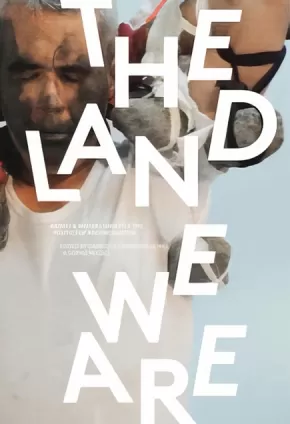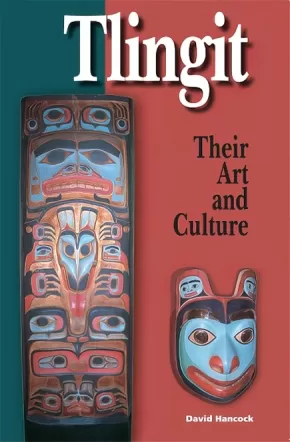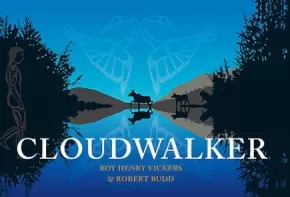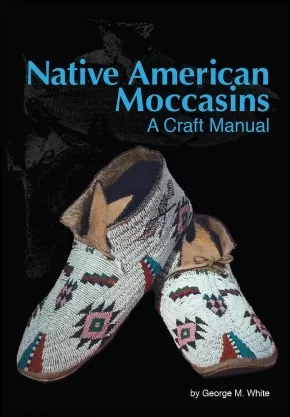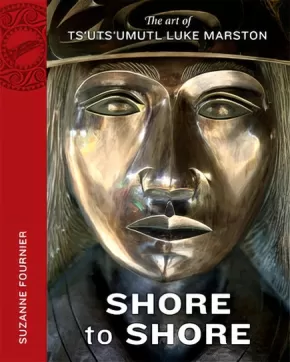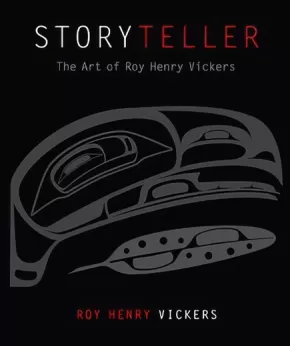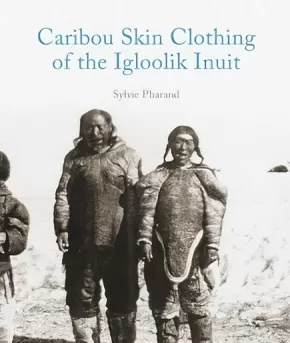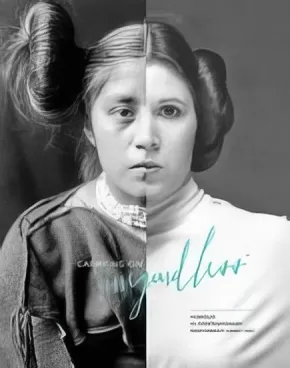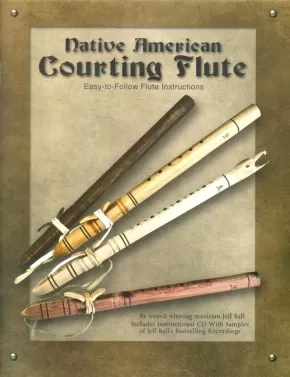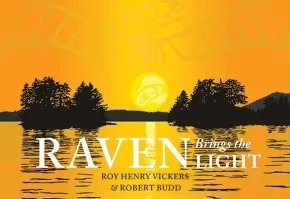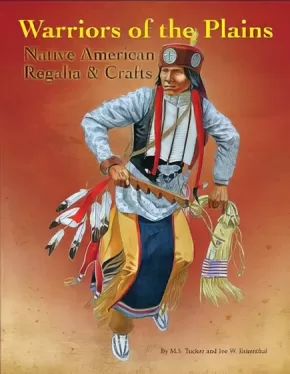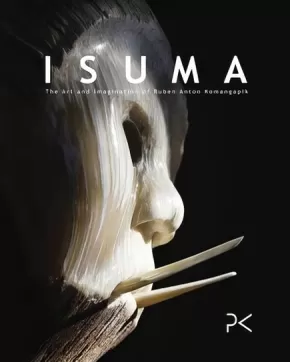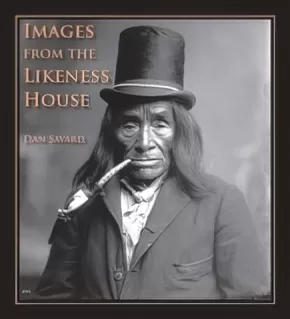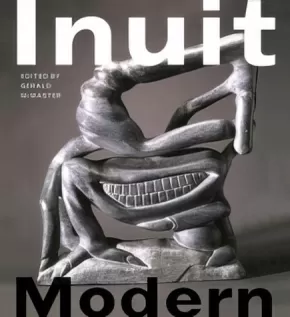
Art
106
-
120
of
139 Results;
Sort By
Go To
of 10
The Land We Are: Artists and Writers Unsettle the Politics of Reconciliation
$24.95
Editors:
Format:
Paperback
Text Content Territories:
Indigenous Canadian;
ISBN / Barcode: 9781894037631
Synopsis:
Synopsis:
The Land We Are is a stunning collection of writing and art that interrogates the current era of reconciliation in Canada. Using visual, poetic, and theoretical language, the contributors approach reconciliation as a problematic narrative about Indigenous-settler relations, but also as a site where conversations about a just future must occur. The result of a four-year collaboration between artists and scholars engaged in resurgence and decolonization, The Land We Are is a moving dialogue that blurs the boundaries between activism, research, and the arts.
The contributors to this book include leading artists and scholars engaged in questions of resurgence, restitution, and decolonization.
Contributors: Jordan Abel, Leah Decter, Jonathan Dewar, David Garneau, Ayumi Goto, Allison Hargreaves, Gabrielle L'Hirondelle Hill, Jaimie Isaac, David Jefferess, Layli Long Soldier, The New BC Indian Art and Welfare Society Collective, Sophie McCall, Peter Morin, Skeena Reece, Dylan Robinson, Sandra Semchuk, Adrian Stimson, Clement Yeh, and Keren Zaiontz.
Reviews
"This beautifully produced, richly illustrated volume not only offers readers a visual journey into the featured artistic installations and performance pieces, but through its creative use of text and graphic design is itself an artistic statement on reconciliation." --Winnipeg Free Press
Educator Information
Recommended for students in grades 11 and 12, as well as at a college/university level.
Additional Information
240 pages | 6.50" x 9.50"
Tlingit: Their Art and Culture
$12.95
Format:
Paperback
Text Content Territories:
Indigenous American; Alaska Native; Tlingit;
ISBN / Barcode: 9780888395306
Synopsis:
Synopsis:
When you visit southeast Alaska you encounter the Tlingit Indians and their very rich lands, diversified culture and wondrous art forms. You can visit from cruise ships, from the Alaska Ferry system, from private boats, from the air, or by following the highway systems though Hyder, Skagway or Haines.
The richness of the Tlingit culture flows from the incredible diversity and abundance of the surrounding seas: its fish, whales and sea life, the prolific clam beaches, and the incredible wealth from the spawning fish that feed the bears and eagles and nutrify the dense coniferous forest. The ease with which the natives could extract a good living provided much extra time to devote to developing an extraordinarily rich culture and a prolific art, as well as the warring and slave trading that set the northwest coast peoples apart from the other more food-deprived North American native peoples.
This book will give you a glimpse into the richess of their culture and art and afford you some understanding how the Tlingit evolved as part of this productive land.
Cloudwalker
$24.95
Format:
Hardcover
Text Content Territories:
Indigenous Canadian; First Nations; Gitxsan (Gitksan);
ISBN / Barcode: 9781550176193
Synopsis:
Synopsis:
Cloudwalker, describing the creation of the rivers, is the second in a series of Northwest Coast legends by Roy Henry Vickers and Robert Budd. Their previous collaboration, Raven Brings the Light (2013), is a national bestseller.
On British Columbia's northwest coast lies the Sacred Headwaters--the source of three of British Columbia's largest salmon-bearing rivers. These rivers are the source of life for all creatures in the area. But what gave life to the rivers themselves?
Astace, a young Gitxsan hunter, is intent on catching a group of swans with his bare hands. He is carried away by the birds' powerful wings and dropped in the clouds. With only a cedar box of water Astace wanders the clouds, growing weaker, stumbling and spilling the contents. When he finally returns to earth he discovers lakes, creeks, and rivers where there were none before. The Gitxsan rejoice at having him home, and name the new river they live alongside Ksien--"juice from the clouds."
Roy Henry Vickers' vibrant artwork, including 18 new prints, accompany this new retelling of an ancient story--readers of all ages will be captivated.
Educator & Series Information
This book is part of the Northwest Coast Legends series.
Other books in this series include:
Raven Brings the Light
Cloudwalker
Orca Chief
Peace Dancer
Recommended for ages 3 to 6.
Additional Information
40 pages | 12.00" x 8.25"
Native American Moccasins: A Craft Manual
$21.95
Format:
Paperback
Text Content Territories:
Indigenous American; Indigenous Canadian;
ISBN / Barcode: 9781929572267
Synopsis:
Synopsis:
First published in 1969, this expanded third edition is an excellent reference for both collectors and craftspeople. Detailed instructions for measuring, patternmaking, fitting, and construction guide the crafts worker in producing a wide variety of authentic Native American footwear that's tailored to each individual's foot. Readers are provided with a fascinating overview of the history of indigenous footwear in North America and an in-depth Introduction to rawhide, leather, and buckskin by G. D. Wood. Patterns for 28 moccasin types covering over 30 tribes - including the Assiniboine (Alberta/Manitoba), Kootenai (British Columbia), and Yellowknives (Northern Territories) of Canada - are featured along with new instructions for making Plains hard-sole, Northern Plains soft-sole, and Cherokee/Southeastern-style moccasins. Also included is a brief history of the tribes, additional resources, and website references. Forty-one full-color photographs accompany the patterns, along with 22 historic period photos of camp life, tanning hides, individual chiefs, and more.
Shore to Shore: The Art of Ts'uts'umutl Luke Marston
$26.95
Format:
Paperback
Text Content Territories:
Indigenous Canadian; First Nations; Salish; Coast Salish;
ISBN / Barcode: 9781550176704
Synopsis:
Synopsis:
Stanley Park, Vancouver, September 2014. A fourteen-foot bronze-cast cedar sculpture is being erected. Dignitaries from all levels of government are present, including leaders of the Coast Salish First Nations and representatives from Portugal's Azores Islands. Luke Marston, carver/artist, supervises as his three-year project is revealed to the world.
The sculpture--titled Shore to Shore--depicts Luke's great-great-grandparents, Portuguese Joe Silvey, one of BC's most colourful pioneers, and Kwatleematt (Lucy), a Sechelt First Nation matriarch and Silvey's second wife. Silvey and Kwatleematt are flanked by Khaltinaht, Silvey's first wife, a noblewoman from the Musqueam and Squamish First Nations. The trio are surrounded by the tools of Silvey's trade: seine nets, whaling harpoons, and the Pacific coast salmon that helped the family thrive in the early industries of BC. The sculpture references the multicultural relationships that are at the foundation of BC, while also showcasing the talents of one of Canada's finest contemporary First Nations carvers.
Combining interviews, research and creative non-fiction narration, author Suzanne Fournier recounts Marston's career, from his early beginnings carving totems for the public at the Royal BC Museum, to his study under Haida artist Robert Davidson and jewellery master Valentin Yotkov, to his visits to both his ancestral homes: Reid Island and the Portuguese Azores island of Pico--journeys which provided inspiration for the Shore to Shore statue.
Educator Information
Recommended in the Canadian Indigenous Books for Schools 2015/2016 resource list for grades 7 to 12 for comparative civilizations, English language arts, photography, social studies, and visual arts.
Additional Information
128 pages | 8.00" x 10.00"
Storyteller: The Art of Roy Henry Vickers
$49.95
Format:
Hardcover
Text Content Territories:
Indigenous Canadian; First Nations; Haida; Heiltsuk (Bella Bella); Tsimshian (Ts'msysen);
ISBN / Barcode: 9781550176407
Synopsis:
Synopsis:
Roy Henry Vickers is known around the world for his unique artistic style marked by clean lines, vivid colours and natural themes drawn from the rugged beauty of the west coast of British Columbia. Influenced by his Tsimshian, Haida, Heiltsuk and British heritage, Vickers unites the stylized forms of his aboriginal ancestry with the realism of European art, creating vibrant images that speak to a universal spirit. His limited edition prints can be found in homes, museums and galleries around the world and have been presented to royalty.
Storyteller collects a decade of prints and paintings by Roy Henry Vickers into one stunning volume, including 118 previously unpublished works, making this a much-anticipated addition to the libraries of admirers of Pacific Northwest art. A note from the artist accompanies each image, inviting the reader to a deeper understanding of both art and artist.
Additional Information
240 pages | 10.00" x 12.00"
Caribou Skin Clothing of the Iglulik Inuit (2 in Stock)
$29.95
Format:
Paperback
Text Content Territories:
Indigenous Canadian; Inuit; Iglulingmuit (Iglulik Inuit);
ISBN / Barcode: 9781927095171
Synopsis:
Synopsis:
Caribou Skin Clothing of the Iglulik Inuit outlines the various steps involved in the creation of traditional Inuit caribou skin clothing, namely the hunt, preparation, and sewing.
In addition to diagrams and practical instructions, this book is filled with historical information and insights from Elders of the Iglulik region.
Meticulously researched by former Arctic resident and anthropologist Sylvie Pharand, this book can be used as a practical guide to creating caribou skin clothing, as well as a general-interest text for those interested in traditional skin clothing.
Carrying on
$24.95
Artists:
Format:
Paperback
Text Content Territories:
Indigenous Canadian; First Nations;
ISBN / Barcode: 978-0-9812341-2-0
Synopsis:
Synopsis:
Carrying on "Irregardless" is a handsomely illustrated paperback based on the first exhibition to focus on humour in Northwest Coast First Nations art. The show, mounted by the Bill Reid Gallery of Northwest Coast Art in Vancouver is titled after one of Bill Reid's favourite deliberate grammatical blunders that were part of the sense of humour that, as Martine J. Reid says in her introduction, "was perhaps a part of his survival kit, as it often seems to be for First Nations people."
Within this book are the photographed artworks of twenty-eight prominent Northwest Coast artists, including such varied approaches to humour as a rare prehistoric Coast Salish bowl featuring a smiling face carved from stone, a 1990s etching depicting Raven and the First Men Overlooking Wreck Beach (to catch a glimpse at all the nudists, of course!) and a pair of red and yellow cedar bark high heels titled Too Haida. Collected here are artworks that act as political weapons, bold challenges to stereotypes, and nods to the Trickster. They satirize, ridicule and play. And, above all, they make us laugh, and think, and laugh again.
Accompanying the work are descriptions, quips and jokes from the artists themselves. And preceding it stands three impassioned contextualizing essays that range from the poetic to the academic to the anecdotal, by Tahltan artist, stand-up comedian and co-curator, Peter Morin; Director of Content and Research for the Bill Reid Gallery of Northwest Coast Art and co-curator, Martine J. Reid; and CEO of the Bill Reid Trust and Director for the Bill Reid Gallery of Northwest Coast Art, Mike Robinson.
maskisina: A Guide to Northern-Style Métis Moccasins
$24.95
Format:
Paperback
Text Content Territories:
Indigenous Canadian; Métis;
ISBN / Barcode: 9781926795119
Synopsis:
Synopsis:
maskisina: A Guide to Northern-Style Métis Moccasins is a follow-up to the highly successful wapikwaniy: A Beginner’s Guide to Métis Floral Beadwork. Much like wapikwaniy, maskisina guides readers, step-by-step, on how to create their very own moccasins. It contains detailed photographs along with each step. It also includes a historic overview of moccasins by Sherry Farrell Racette. Patterns for cutting the correct sizes for the soles and vamps are included in the book.
Educator Information
Grade Level: Secondary/Post Secondary/Adult
Native American Courting Flute: Easy-to-Follow Flute Instructions (1 in Stock) - ON SALE!
$14.00 $19.95
Format:
Paperback
Text Content Territories:
Indigenous American; Native American;
ISBN / Barcode: 9781929572229
Synopsis:
Synopsis:
This manual teaches techniques of playing the flute for both the absolute beginner as well as the seasoned player. Using the CD that accompanies this manual, readers will be able to learn the basic skills needed to play.
The author describes the history of the modern Native American Flute and includes the traditional legend of how it became an integral part of the courting ritual. Also included are instructions for maintaining your flute, numerous graphs and illustrations of scales to practice, advice on how to choose the best flute for you, songwriting tips, practice songs, and blank composition sheets. The instructional CD features samples of Jeff Ball's bestselling recordings. Beautiful color photos of both flute players and flutes accompany the text.
Raven Brings the Light
$24.95
Format:
Hardcover
Text Content Territories:
Indigenous Canadian; First Nations; Tsimshian (Ts'msysen); Haida;
ISBN / Barcode: 9781550175936
Synopsis:
Synopsis:
In a time when darkness covered the land, a boy named Weget is born who is destined to bring the light. With the gift of a raven's skin that allows him to fly as well as transform, Weget turns into a bird and journeys from Haida Gwaii into the sky. There he finds the Chief of the Heavens who keeps the light in a box. By transforming himself into a pine needle, clever Weget tricks the Chief and escapes with the daylight back down to Earth.
Vividly portrayed through the art of Roy Henry Vickers, Weget's story has been passed down for generations. The tale has been traced back at least 3,000 years by archeologists who have found images of Weget's journey in petroglyphs on the Nass and Skeena rivers. This version of the story originates from one told to the author by Chester Bolton, Chief of the Ravens, from the village of Kitkatla around 1975.
Reviews
"One of the great problems we face today is our sense of isolation and separateness from the rest of the world. Roy Henry Vickers' art constantly reminds us of the interconnectedness of everything in the world. With this magnificent book, he shows us our interdependence physically and spiritually. It is a message we have to hear." — David Suzuki, environmental activist, broadcaster, author
Educator & Series Information
This book is part of the Northwest Coast Legends Series.
Other books in this series include:
Raven Brings the Light
Cloudwalker
Orca Chief
Peace Dancer
Recommended for ages 3 to 6.
Additional Information
40 pages | 12.00" x 8.25"
Warriors of the Plains: Native American Regalia & Crafts (2 in Stock) - ON SALE!
$18.00 $23.95
Format:
Paperback
Text Content Territories:
Indigenous American; Indigenous Canadian;
ISBN / Barcode: 9781929572243
Synopsis:
Synopsis:
Filled with images both vintage and modern, this book illustrates the magnificent regalia worn by the warriors of the Great Plains. Many of today's powwow dancers incorporate vintage components in their outfits, and the numerous craftwork techniques presented here are sure to provide inspiration for creating contemporary dance and ceremonial regalia. Never before available in this format, the wealth of information in this book (covering beginning, intermediate, and advanced levels of regalia) will guide readers in creating authentic reproductions of the clothing worn by tribes of the Northern, Central, and Southern Plains.
Additional Information
96 pages | 8.45" x 10.80"
Isuma: The Art and Imagination of Ruben Komangapik
$29.95
Artists:
Format:
Paperback
ISBN / Barcode: 9781926569185
Synopsis:
Synopsis:
Ruben Anton Komangapik is one of the Arctic's most gifted sculptors.
His work has been exhibited across Canada with pieces on permanent loan to the Museum of Nature and Culture in Montreal. In Isuma, Ruben's vibrant, provocative sculpture, and his artistic process, are brought to life by photographer Estelle Marcoux Komangapik's arresting images.
Part autobiography, part art object, this book will introduce Canadians to one of the Arctic's most talented young artists.
Images from the Likeness House
$39.95
Format:
Paperback
Text Content Territories:
Indigenous American; Alaska Native; Native American; Indigenous Canadian; First Nations;
ISBN / Barcode: 9780772661500
Synopsis:
Synopsis:
On a winter’s day in 1889, Tsimshian Chief Arthur Wellington Clah went to Hannah and Richard Maynard’s photography studio in Victoria “to give myself likeness.” In Images from the Likeness House, Dan Savard explores the relationship between First Peoples in British Columbia, Alaska and Washington and the photographers who made images of them from the late 1850s to the 1920s. He gives examples of the great technological advancements that took place, from wet-glass-plate to nitrate-film negatives, showing the images in their original state, not cropped, corrected or retouched.
This is not only an important book about photography, but also a visual statement about perception (and misperception), cultural change and survival. Images from the Likeness House will appeal to ethnographers, photographers, art lovers and anyone interested in the history of BC, Alaska and Washington.
Additional Information
224 pages | 9.30" x 10.30"
Inuit Modern: Masterworks from the Samuel and Esther Sarick Collection
$24.99
Artists:
Editors:
Format:
Paperback
Text Content Territories:
Indigenous Canadian; Inuit;
Grade Levels: 12; University/College;
ISBN / Barcode: 9781553657781
Synopsis:
Synopsis:
A gorgeous retrospective on the transformation of Inuit art in the 20th century, mirroring the vast and poignant cultural changes in the North.
In response to a rapidly changing Arctic environment, Inuit have had to cope with the transition from a traditional lifestyle to the disturbing realities of globalization and climate change. Inuit art in the latter half of the 20th century reflects the reciprocal stimulus of contact with Euro-Canadians and embodies the evolution of a modern Inuit aesthetic that springs from an ancient cultural context, creating an exciting new hybridized art form. Inuit Modern: Art from the Samuel and Esther Sarick Collection situates modern Inuit art within a larger framework that reinterprets the Canadian Arctic.
Essays by leading Canadian scholars in the field including Ingo Hessel, Robert McGhee, Christine Laloude, Heather Igloliorte, Dorothy Eber and Bernadette Driscoll Engelstad examine the social, political and cultural transformation through the dynamic lens of colonial influence and agency. Inuit Modern also features interviews with David Ruben Piqtoukun and Zacharias Kunuk.
Reviews
"The work of Inuit artists has continually evolved in response to the industrialized, bureaucratic culture encroaching from the south. Inuit Modern, an opulent new coffee-table book, displays the astonishing results. The 175 pieces beautifully reproduced here span the last century." — Georgia Straight
"This book is full of treasures from one of the world's most comprehensive collections of Inuit art. With more than 175 works by Inuit artists, the reader is taken on a journey of the Inuit aesthetic as it evolves from its from traditional roots to a more contemporary and globalized art form." — Globe & Mail Top 100 for 2010
Additional Information
256 pages | 10.00" x 11.10"
Sort By
Go To
of 10

